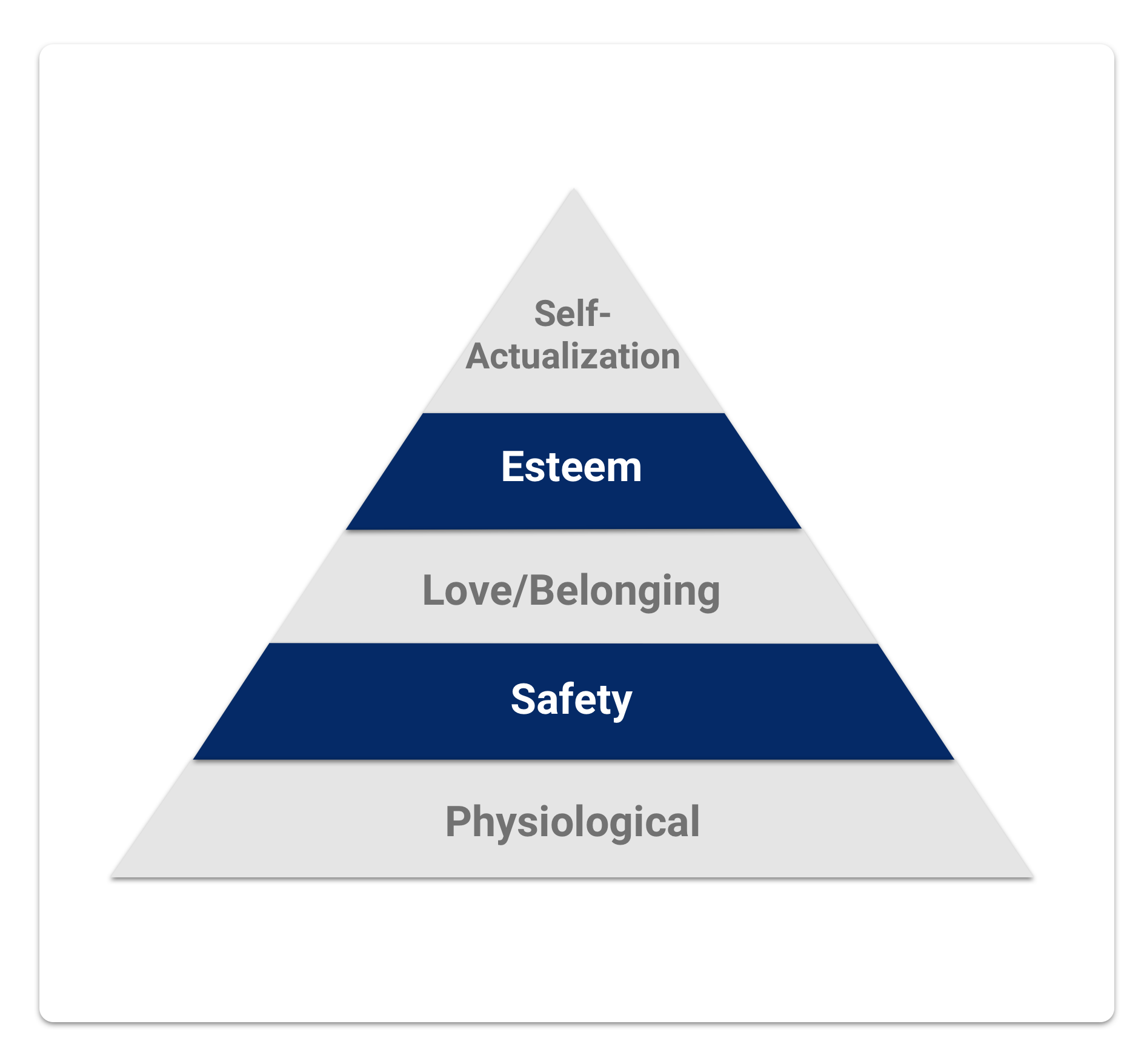Our individual needs stem from the same places, like feeling safe or being recognized for something we’ve done. And that translates into work environments too. A study by Gallup found that only 36 percent of U.S. workers were engaged in their jobs, which leaves a huge percentage of the working population lacking job satisfaction or professional enjoyment. Applying motivation theories and making some changes to your company policies could boost employee morale and productivity at all levels of your organization.
What Are Motivation Theories?
Over the last century, psychologists around the world have studied what makes people tick and why. As with most things in developmental science, there’s not always agreement, but there’s certainly overlap in the different theories on motivation that have emerged.
But what is a motivation theory? In short, it’s about explaining what goes into human decision-making and how this ultimately impacts our actions and behaviors. Or to put it more simply: What makes us act the way we do?
Understanding what incentivizes us, how our behavior can influence others, and what needs we’re trying to fulfill with the actions that we take is an important part of working toward positive well-being.
1. Maslow’s Hierarchy of Needs
There’s a good chance that you’ve heard of Maslow’s hierarchy of needs before, even if you’ve never taken a psychology class. Developed by Abraham Maslow, it suggests that humans must satisfy five basic needs in order to be fully happy. These are often arranged in a pyramid structure and, in order to reach self-actualization, or the realization of potential and abilities, we must achieve each of the preceding levels first.

The lower-level needs represent our physiological needs like hunger, sleep, and shelter. Without these, humanity cannot survive. Once those are established, we can move onto the next level of safety needs such as job security and physical protection from harm. After this comes social needs, like love and friendship.
The higher-level needs relate more to intrinsic or internal factors–self-esteem, appreciation, and respect. If all of these esteem needs have been met, only then can you strive for self-actualization at the top of the pyramid?
Maslow’s theory centers around personal growth, but can easily be adapted when thinking about an individual’s career development. As a manager, you’re responsible for providing the basic level of needs to all employees (like restrooms, water fountains or coolers, and a breakroom), regardless of the type of role they hold in your company. Everyone needs to feel safe within their work environment.
But it’s the growth that needs higher up the pyramid where you can really stand out from other companies.
As a manager, it’s your job to provide employees with adequate feedback about their day-to-day responsibilities and tasks. To help your team build their self-esteem, take the time to find out how they prefer to receive their feedback (e.g. one-on-one or via email, at the end of a project, or on a more frequent basis). Regular positive affirmations are a great booster for self-esteem, helping your team to feel empowered and trusted as they grow in their role with your company.
A sense of belonging can be difficult to achieve in the workplace, but this is where you can get creative. Host social activities or opportunities for colleagues to interact in an off-the-clock setting and give people a chance to socialize with other employees that they wouldn’t normally work with.
If you’re interested in exploring these ideas further, take a look at Alderfer’s erg theory. This is an adaptation of Maslow’s pyramid, scaling the levels back to existence, growth, and relatedness needs. Alderfer also suggests that the needs aren’t progressive, meaning that you could possibly achieve happiness in one of the higher levels, even if you haven’t satisfied some of your more basic needs. It’s definitely an interesting variation to consider when you’re thinking about how you can better serve your team members.
Read more: Manage your employees effectively with 8 valuable tips
2. Herzberg’s Two-Factor Theory
Also known as the “motivation-hygiene theory,” Frederick Herzberg determined that individuals act according to one of two things: hygiene and motivators. Hygiene factors relate to the work environment, like working conditions, salary, and interpersonal relationships within the workplace. Motivators are the factors that encourage hard work, like job recognition and promotions.
Though they’re two different factors, both hygiene and motivators are important to consider—and addressing one, without the other, may not do you any good. For example, low pay or poor working conditions (hygiene factors) will most likely make your staff very dissatisfied, but having good pay or great working conditions is not always a motivating factor by itself. If a team member, for instance, consistently stays in the same role at your company, despite expressing a desire for greater responsibility, their pay alone—a significant hygiene factor—may not be enough to keep them at your company.
On the other hand, while the potential for a promotion can significantly increase an employee’s drive and dedication to a project or task, it’s not always the ticket to greater happiness. If that same employee has a strained relationship with their manager (hygiene factor), a promotion alone (motivator) may not lead to greater levels of satisfaction.
Thinking about how this applies to your organization, you should aim to have a good balance of both hygiene and motivators to achieve the highest level of employee happiness.
3. McClelland’s Needs Theory
David McClelland’s motivation theory breaks down three basic needs, with everyone fitting into one of these blocks:
- Need for power: These individuals want authority and control. They often make good leaders thanks to their self-discipline and drive
- Need for achievement: You’ll find that these workers have a high need for success and meeting objectives. They love a challenge and work hard to exceed any goals that they’ve set.
- Need for affiliation: People in this group love collaboration and group work. To them, it’s more about the final outcome being a success rather than taking all the credit for themselves. They’re often the most social employees and work well with others.
McClelland argues that the deciding force behind which of these need groups we most closely associate with is our past experiences. Taking the time to get to know each of your employees should allow you to see which need category they fall into and plan their rewards accordingly from there.
For those that fall into the affiliation and achievement need groups, this can be more attainable in a workplace setting. Offering workers the chance to work on a project in a small team, rather than individually, can be a huge boost for employees with affiliation needs. Building a goal-oriented rewards system (e.g. for every $1,000 each team member makes in new sales or service contract increases, they get a free coffee or a charitable donation to an organization of their choice) can be incredibly motivating for people with achievement needs.
Individuals with power needs can be more of a challenge. After all, you can’t hand out big promotions to everyone after every single project. But think of ways you can scale down this idea. Are there new team members who would benefit from a mentor relationship? Is there a training they can lead? Or a webinar they can host? Brainstorm ways this employee can get in front of others, while still contributing to your company.
Read more: Performance management – What every business needs to know
4. Vroom’s Expectancy Theory
As the name suggests, Victor Vroom’s motivation theory suggests that human behavior is a result of what people think the outcome of that action will be, or its instrumentality. Or, in other words, their motivation for their behavior is based on how much they want the outcome, otherwise known as the valence.
Ultimately, this theory says that people believe their efforts will generate successful results and that they will be rewarded for those efforts. In a work setting, this theory means that those who work the hardest will expect the most recognition upon a successful outcome.
When applying this to your own team, think about building a system of rewards that aligns with company policies (so don’t go offering promises that you can’t keep) and creates challenging, yet achievable, goals. Your workers will see right through an easy goal so they may not put as much effort into accomplishing it.
But if you set harder-to-attain goals that still feel realistic, they can be great motivators to encourage hard work. Focus on assigning goals based on team members’ skills or areas that people are looking to improve in. Use this as an opportunity for individuals to push themselves professionally, while still having confidence that they can achieve what’s being asked of them.
According to How To Create An Effective Offboarding Process by Hourly

